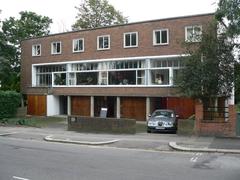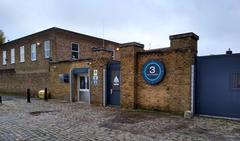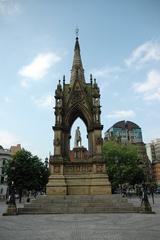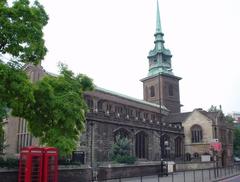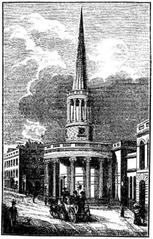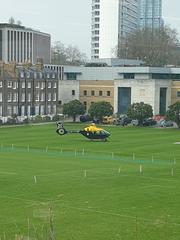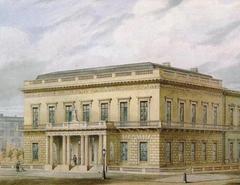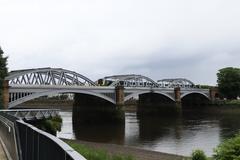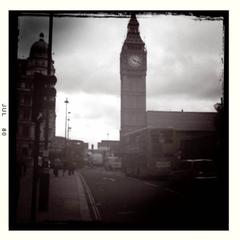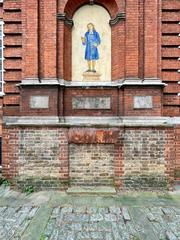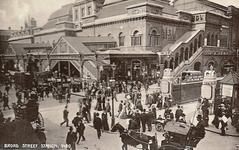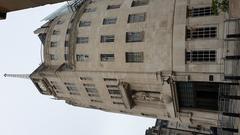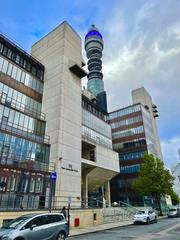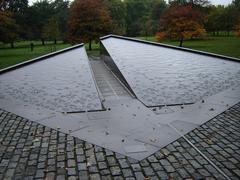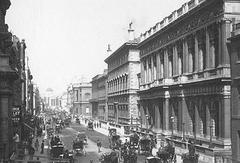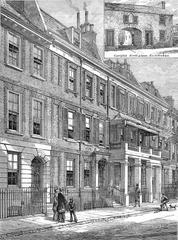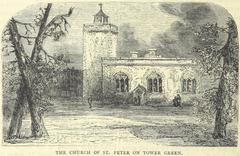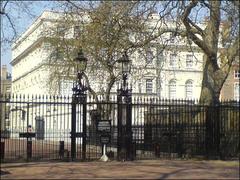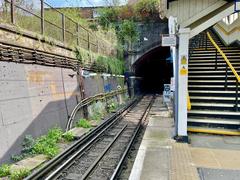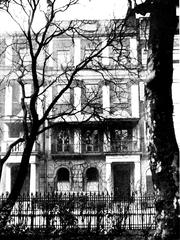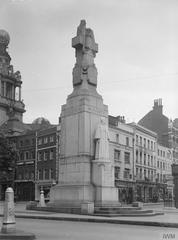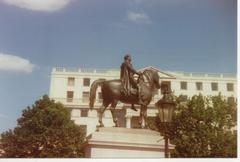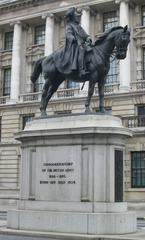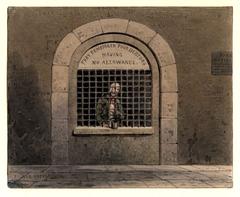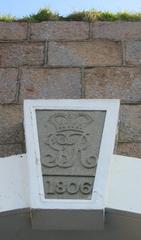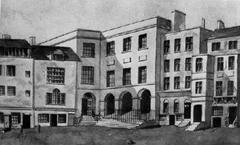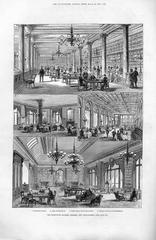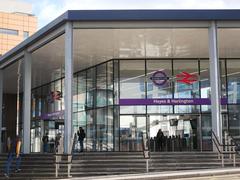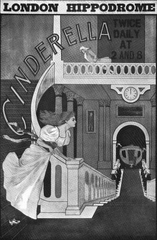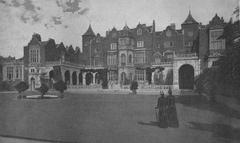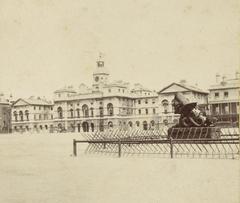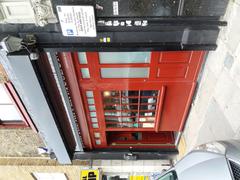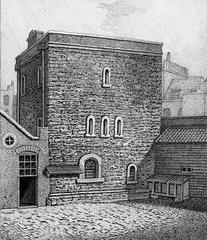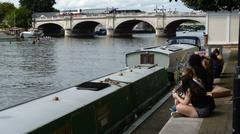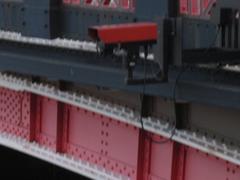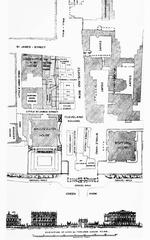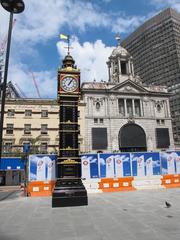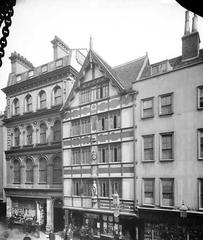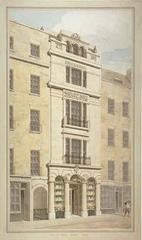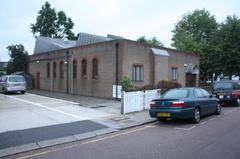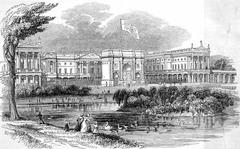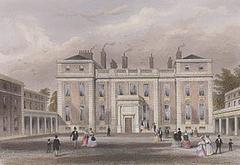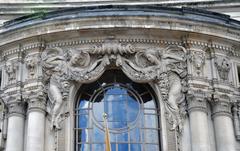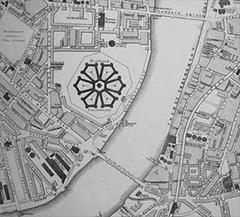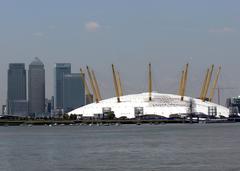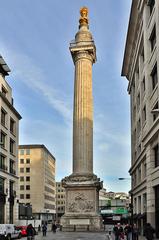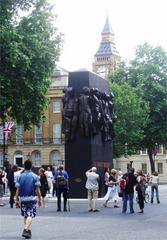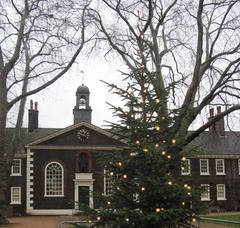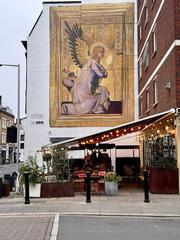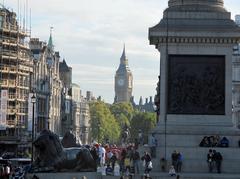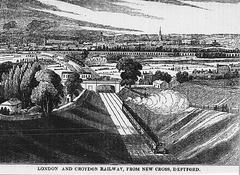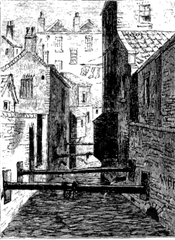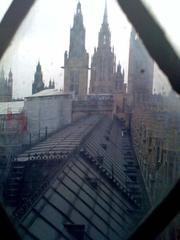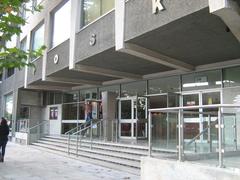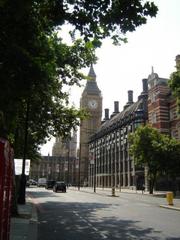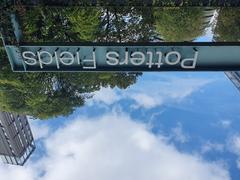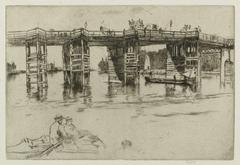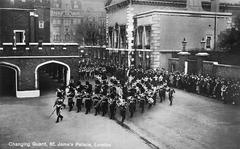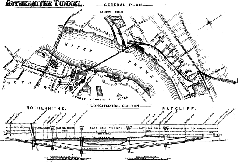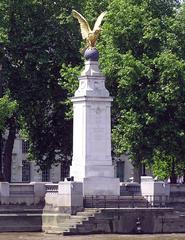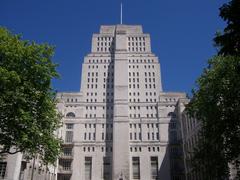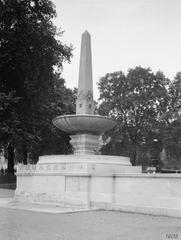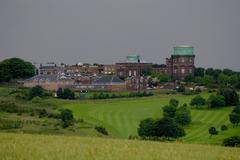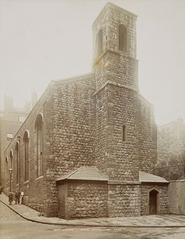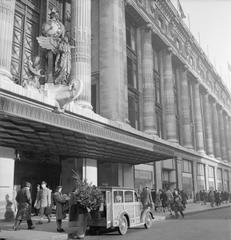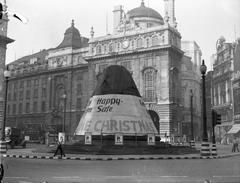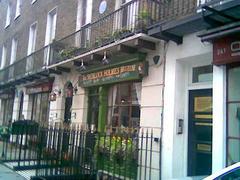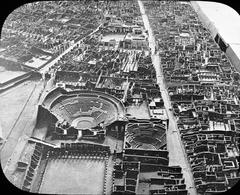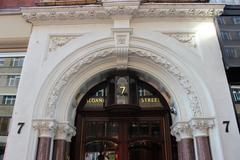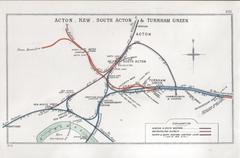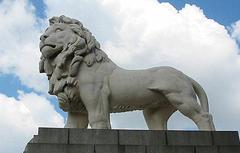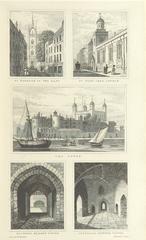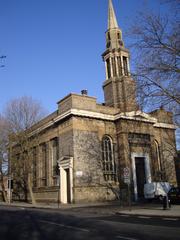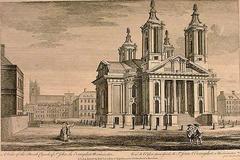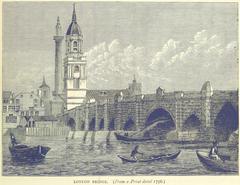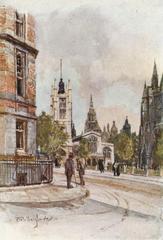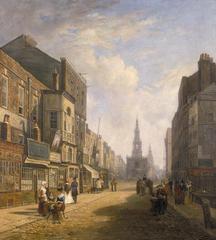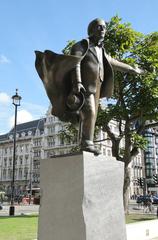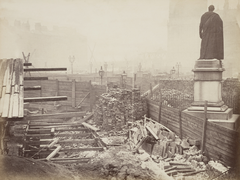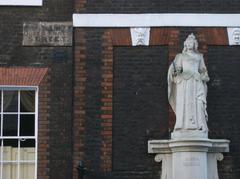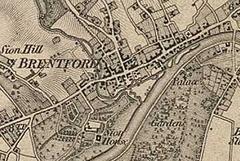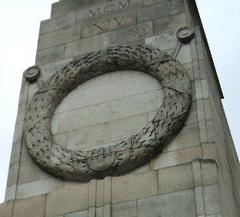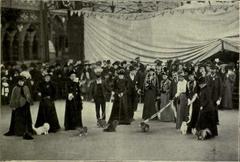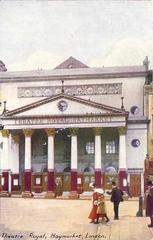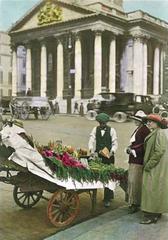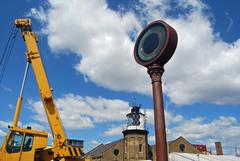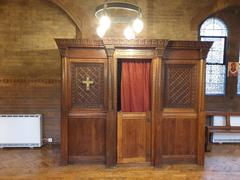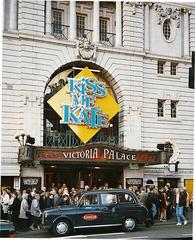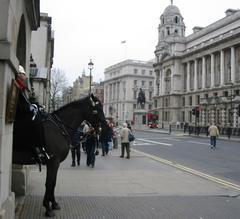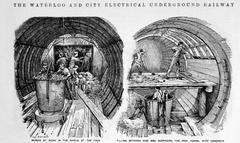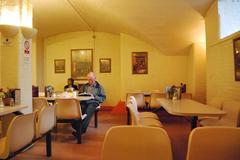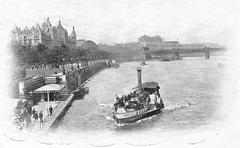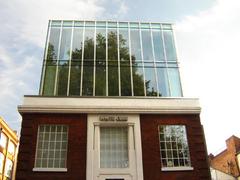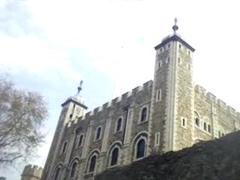
Comprehensive Guide to Visiting London Paddington Station
Publication Date: 17/08/2024
Introduction to London Paddington Station
Paddington Station, located in the heart of London, is more than just a pivotal transportation hub; it is a historical and cultural landmark that has stood the test of time. Known for its majestic Victorian architecture and the engineering genius of Isambard Kingdom Brunel, the station has undergone numerous transformations and modernizations since its inception in the mid-19th century. From its early beginnings as a small settlement named after the Anglo-Saxon landowner Padda to its current status as a bustling railway terminus, Paddington Station embodies the evolution of London’s transportation network (TimeOut, Network Rail).
The station’s significance is not limited to its role in facilitating travel; it is also an architectural marvel. Designed by Brunel and Matthew Digby Wyatt, the station’s iconic train shed and vaulted ceilings are celebrated landmarks in their own right. Over the years, Paddington Station has adapted to the growing demands of modern transportation while preserving its historical essence. From the introduction of the Great Western Railway in the 1830s to the recent launch of the Elizabeth Line, the station continues to be a key player in London’s connectivity (Wikipedia, This is Paddington).
For travelers and history enthusiasts alike, Paddington Station offers a unique blend of historical significance, cultural heritage, and modern amenities. This comprehensive guide aims to provide you with all the information you need to make the most of your visit, including historical insights, visitor tips, and nearby attractions.
Table of Contents
- Introduction
- Paddington Station: A Comprehensive Guide
- Historical Background
- Early Origins and Naming
- The Arrival of the Railway
- Isambard Kingdom Brunel’s Vision
- Construction and Expansion
- Integration with the London Underground
- 20th Century Upgrades
- World War II and Post-War Developments
- Modernization and Redevelopment
- The Arrival of the Heathrow Express
- The Elizabeth Line and Future Developments
- Cultural Significance and Architectural Heritage
- Historical Background
- Visitor Information
- FAQ
- Conclusion
Paddington Station: A Comprehensive Guide
Historical Background
Early Origins and Naming
The origins of Paddington Station can be traced back to the tenth century. The name ‘Paddington’ is derived from an Anglo-Saxon landowner named Padda, who governed a small settlement or ‘tun’ near what is now Marble Arch (TimeOut). Over centuries, Padda’s ‘tun’ evolved into Paddington, a name that has endured through the ages.
The Arrival of the Railway
The advent of the railway era marked a significant transformation for Paddington. By June 1838, the first section of the Great Western Railway (GWR) line from Paddington to Maidenhead was operational. The inaugural service was celebrated with speeches and toasts, and even a daring stunt by Mr. Guppy, who walked across the tops of the carriages while the train was in motion (TimeOut).
Isambard Kingdom Brunel’s Vision
Isambard Kingdom Brunel, one of the most renowned civil engineers of the 19th century, was the mastermind behind Paddington Station. Initially, Brunel had grand plans for the station, but due to budget constraints, he had to settle for a more modest design. The first station was a temporary structure, utilizing the arches of Bishop’s Bridge Road as a façade (Network Rail).
Construction and Expansion
The main station, designed by Brunel with architectural detailing by Matthew Digby Wyatt, was approved in February 1853 and opened in 1854. This structure included the iconic train shed, which remains a hallmark of the station’s architecture (Wikipedia). The station was initially served by four platforms, but as train traffic and passenger numbers increased, it expanded to its current configuration of thirteen platforms (UseBounce).
Integration with the London Underground
Paddington Station holds the distinction of being the first station in London to be served by the London Underground. In 1863, the Metropolitan Railway opened its line from Paddington to Farringdon Street, using steam locomotives. Subsequent additions included the District Railway in 1868, the Bakerloo Railway in 1913, and the Hammersmith & City Railway in 1926 (Mercure Paddington).
20th Century Upgrades
Throughout the 20th century, Paddington Station underwent several major upgrades to accommodate increasing passenger numbers and evolving transportation needs. Significant expansions occurred in the 1870s, 1910s, and 1960s. Despite these changes, efforts were made to preserve the station’s original architectural elements (Wikipedia).
World War II and Post-War Developments
During World War II, Paddington Station sustained damage but continued to operate. Post-war developments included the construction of a new entrance building on Praed Street between 1933 and 1935, and a new concourse on The Lawn area between platforms 8 and 9 from 1968 to 1970 (Mercure Paddington).
Modernization and Redevelopment
In the late 20th and early 21st centuries, Paddington Station underwent extensive modernization and redevelopment. A significant £65 million facelift was completed in 1998, followed by a £47 million refurbishment of Span 4 between 2009 and 2011. These efforts aimed to restore the Victorian structure while integrating modern amenities (This is Paddington).
The Arrival of the Heathrow Express
The introduction of the Heathrow Express in 1998 marked a new era for Paddington Station. This high-speed train service provided a direct link between Paddington and Heathrow Airport, significantly enhancing the station’s connectivity and reinforcing its status as a major transportation hub (This is Paddington).
The Elizabeth Line and Future Developments
The construction of the Elizabeth Line, part of the Crossrail project, has further transformed Paddington Station. With the central section of the Elizabeth Line commencing service in May 2022, the station now accommodates 24 trains per hour, each carrying up to 1,500 passengers (This is Paddington). Future developments include the creation of Paddington Square, a new commercial and retail space that will further enhance the station’s role in London’s urban landscape (CK Travels).
Cultural Significance and Architectural Heritage
Paddington Station is not just a transportation hub; it is a cultural and architectural landmark. Its majestic train shed, with soaring vaulted ceilings and elegant ironwork, has been immortalized in literature, poetry, and cinema. The station is also home to notable landmarks such as the Paddington Bear statue and the historic Paddington Hotel (Raymond Duggan Travel).
Visitor Information
Tickets and Visiting Hours
Paddington Station is open 24 hours a day, 7 days a week, although individual shop and service hours may vary. Tickets for train services can be purchased online, at ticket counters, or through automated machines located throughout the station. For more detailed information on ticket prices and schedules, visit the official Paddington Station website.
Travel Tips and Nearby Attractions
Accessibility
Paddington Station is fully accessible, with step-free access to all platforms and facilities. Elevators, ramps, and accessible restrooms are available throughout the station.
Nearby Attractions
- Hyde Park: A short walk from Paddington Station, Hyde Park offers expansive green spaces, boating on the Serpentine, and various cultural events.
- Little Venice: Known for its picturesque canals and waterside cafes, Little Venice is a charming area to explore.
- The Rolling Bridge: A unique piece of kinetic architecture located near Paddington Basin.
FAQ
What are the visiting hours for Paddington Station?
Paddington Station is open 24/7, but individual shop and service hours may vary.
How much are Paddington Station tickets?
Ticket prices vary depending on the destination and class of service. For the most up-to-date information, visit the official Paddington Station website.
Are there guided tours available at Paddington Station?
Yes, guided tours are available and can be booked through various tour operators. These tours often include historical insights and architectural highlights.
Conclusion
Paddington Station’s rich history, architectural splendor, and ongoing modernization make it a vital part of London’s transportation network and cultural heritage. From its Victorian origins to its current status as a bustling railway terminus, Paddington continues to play a central role in connecting London to the wider world. For more updates and travel tips, download our mobile app Audiala, check out other related posts, or follow us on social media.
Explore the Modernization and Historical Significance of London Paddington Station: Visiting Hours, Tickets, and More
Historical Significance and Architectural Heritage
London Paddington Station, designed by the renowned engineer Isambard Kingdom Brunel and architect Matthew Digby Wyatt, is one of Britain’s most important early Victorian railway stations. The station is celebrated for its striking Victorian spans and cathedral-like transepts, which have been meticulously preserved and restored during various phases of redevelopment. The station’s historical significance is further highlighted by its role as a major transport hub since its opening in 1854.
Phase I Redevelopment
The first phase of the redevelopment, led by Grimshaw Architects, aimed to return the station to its original grandeur by removing ad hoc additions that had accumulated over the years. This phase focused on revealing the wrought iron spans and transepts, which are key elements of the station’s Victorian architecture. The project also included the introduction of low-profile pods made of stainless steel and glass for retail and operational facilities, enhancing both functionality and aesthetic appeal (Grimshaw).
The Lawn: A Modern Concourse
A significant addition to the station is The Lawn, a double-height structure of glass and concrete located at the station’s south end. Originally the stationmaster’s garden, this area was transformed into a public concourse in 1933. The redevelopment scheme restored the 1930s stone facades and created ample space for eating, drinking, and shopping. Enclosed by a lightweight roof of steel and glass, this climate-controlled area offers passengers an optimal view of the dramatic Victorian terminus, fulfilling Brunel’s vision for a grand international terminal (Grimshaw).
Enhanced Passenger Experience
The modernization efforts have significantly improved the passenger experience at Paddington Station. The concourse facilities have been upgraded with sleek points for public information, formed of flat plasma screen monitors. These screens are oriented parallel to the main station vaults, providing real-time and targeted information that is instantly accessible to passengers. The clarity of these displays surpasses older technologies, ensuring that passengers receive accurate and timely information (Grimshaw).
Step-Free Access and Improved Connectivity
As part of the ongoing efforts to make London’s transport network more accessible, Paddington Station has been equipped with step-free access to the Bakerloo line from street level. This improvement is expected to be completed by summer 2024, making it easier for passengers with mobility issues to navigate the station. Additionally, the station provides access to multiple railway lines, including the Bakerloo, Circle, District, Hammersmith & City, and Elizabeth lines, enhancing its connectivity within London (TfL).
Paddington Basin and Waterside Development
The redevelopment of the Paddington Basin area has transformed it into a vibrant neighborhood with a mix of residential, commercial, and leisure facilities. The area offers beautiful riverfront walks along the waterside, with plenty of shops, restaurants, and cafes perfect for relaxing and enjoying a meal. The labyrinths of walkways that make up the Canal Network provide hours of fun exploration, making Paddington Basin a must-visit destination for tourists (London Kensington Guide).
Art and Cultural Attractions
The Paddington Art Trail is another highlight of the area, showcasing a variety of artwork across the neighborhood. This route takes visitors through traditional locations and new landmarks, each designed by local artists. The trail offers a unique opportunity to experience different creative styles and engage with the local community. Additionally, the Sheldon Square Amphitheatre hosts regular performances from music artists, comedians, and theatre shows, providing a cultural hub for both locals and tourists (London Kensington Guide).
Little Venice and Floating Pocket Park
Little Venice, located near Paddington Station, is a picturesque area known for its canals and waterways. Visitors can take boat tours from Little Venice to Camden Market, offering a unique perspective of London. The Paddington Floating Pocket Park, situated at the heart of Little Venice’s waterways, provides a peaceful and secluded spot for relaxation. Surrounded by trees and wildflowers, this park offers a tranquil escape from the hustle and bustle of the city (London Kensington Guide).
Future Developments
Looking ahead, Paddington Station is set to undergo further enhancements to accommodate increasing passenger numbers and improve overall efficiency. The ongoing modernization of the Circle, District, Hammersmith & City, and Metropolitan lines aims to increase capacity and boost reliability, making journeys faster and more comfortable. Additionally, the introduction of new trains on the Piccadilly line by 2025 will further enhance the station’s connectivity and service quality (TfL).
Visitor Information
Visiting Hours: Paddington Station is open 24 hours a day, 7 days a week. However, individual shops and restaurants have varying opening hours.
Tickets: Tickets for rail services can be purchased from ticket counters, ticket machines, or online through the official websites of the relevant train operators. For London Underground services, Oyster cards and contactless payments are accepted.
Accessibility: The station offers step-free access, and there are dedicated facilities for passengers with mobility issues. Assistance can be requested in advance for a smoother travel experience.
Travel Tips
- Peak Hours: Paddington Station can get very busy during peak hours (7:30-9:30 AM and 5:00-7:00 PM). Plan your visit accordingly to avoid crowds.
- Nearby Attractions: Take some time to explore nearby attractions such as Hyde Park, Kensington Gardens, and the Sherlock Holmes Museum.
- Dining Options: Numerous dining options are available within the station and in the surrounding area, ranging from quick bites to sit-down meals.
FAQ
Q: What are the visiting hours for Paddington Station?
A: Paddington Station is open 24 hours a day, 7 days a week. However, individual shops and restaurants have varying opening hours.
Q: Where can I buy tickets for rail services?
A: Tickets can be purchased from ticket counters, ticket machines, or online through the official websites of the relevant train operators. For London Underground services, Oyster cards and contactless payments are accepted.
Q: Is Paddington Station accessible for passengers with mobility issues?
A: Yes, the station offers step-free access and dedicated facilities for passengers with mobility issues. Assistance can be requested in advance.
Conclusion
The modernization and redevelopment of London Paddington Station have successfully blended historical preservation with contemporary enhancements, creating a transport hub that is both functional and aesthetically pleasing. With its improved facilities, enhanced accessibility, and vibrant surrounding neighborhood, Paddington Station continues to be a key gateway to London, offering a memorable experience for all visitors.
For more information and updates, download our mobile app Audiala, check out other related posts, or follow us on social media.
Summary and Conclusion
Paddington Station stands as a testament to London’s rich historical and architectural legacy while embracing the future with ongoing modernization efforts. From its origins in the 10th century to its current status as a major railway terminus, the station has continually evolved to meet the needs of its passengers. The contributions of Isambard Kingdom Brunel and the various phases of redevelopment have ensured that Paddington remains both a functional transport hub and a cultural landmark (TimeOut, Grimshaw).
The station’s extensive amenities, accessibility features, and proximity to notable attractions like Hyde Park and Little Venice make it a must-visit for anyone traveling through London. Whether you’re catching a train, exploring its historical corridors, or simply taking in the architectural splendor, Paddington Station offers an experience that is both enriching and convenient. The ongoing developments, including the Elizabeth Line and future projects like Paddington Square, promise to enhance its role in London’s urban landscape even further (This is Paddington, London Kensington Guide).
For more information and updates, don’t forget to download our mobile app Audiala, check out other related posts, or follow us on social media. Your journey through Paddington Stationwill undoubtedly be a memorable one, enriched by its historical significance and modern conveniences.
References and Further Reading
- TimeOut. (2016, March 15). The complete history of Paddington Station. TimeOut
- Network Rail. (n.d.). The history of London Paddington Station. Network Rail
- Wikipedia. (n.d.). London Paddington station. Wikipedia
- This is Paddington. (n.d.). A vision for the future. This is Paddington
- Grimshaw. (n.d.). Paddington Station Phase I Redevelopment. Grimshaw
- London Kensington Guide. (n.d.). Things to do in Paddington. London Kensington Guide



